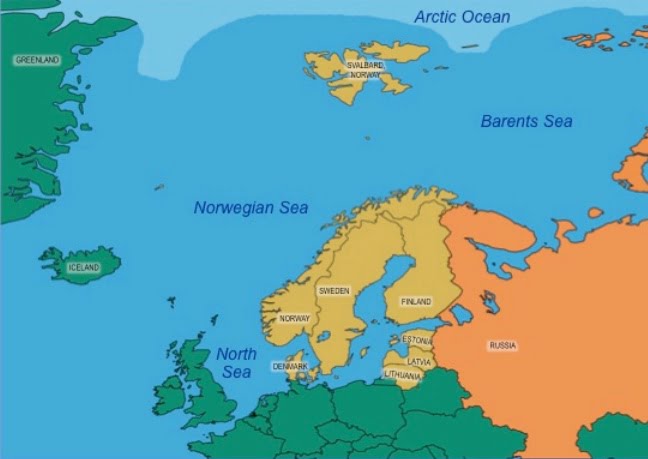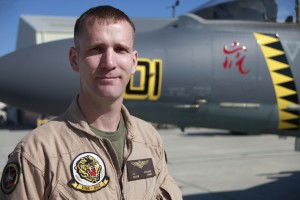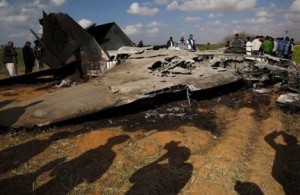2014-06-09 Our new strategic partner, the Centre for Military Studies, Department of Political Science of the University of Copenhagen, published two pieces earlier this year addressing the question of the potential role of large unmanned aerial vehicles for Danish security and defense forces in the years ahead.
The reports provided an especially useful look at evaluating the actual performance of larger UAVs seen from the perspective of a smaller ally who needs to be concerned with both effectiveness of anything they buy and value proposition.
The reports shed important insights on both aspects: effectiveness and the value of larger UAVs. It is not a question of smaller UAVs, which the Danes have been using since 1958; it is a question of Predator or Global Hawk class drones.
Although Denmark is a small country, its forces are expeditionary in character. And when the Kingdom of Denmark is considered, the ISR and C2 coverage is a significant challenge as well.
Denmark’s territory is 16,639 sq. miles (43,094 km²). But the Kingdom of Denmark is of a different character entirely: 2,210,579 km² or 853,509 sq. miles.
And with the Arctic opening, ISR and C2 over a vast area is a significant consideration for the Danes. And the area in question is largely a maritime domain with little land-based infrastructure to provide ISR and C2 compensation for what can be generated from air, sea and space.
Clearly one issue to be sorted out is how Denmark which is responsible for security and defense for the Kingdom is going to pay the costs for such as the Arctic opens. Clearly, money needs to be generated from the various commercial ventures in the region and the increased revenue, which the Faroe Islands and Greenland will receive.
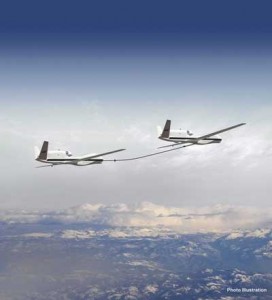
The reports take a hard look at the actual cost and performance of Predators and Global Hawks to determine their relevance to Denmark of procuring and operating a similar capability on their own. The authors of the reports do not buy into UAV-mania whereby unmanned is the future of airpower; rather they look at how large UAVs actually have fit into the kinds of operations Denmark needs to do.
The reports underscore that large UAVs are costly, manpower intensive to operate (notably when data exploitation is added in), crash at a significantly higher rate than manned assets, require significant training of the forces to use the UAVs, and have been successfully largely because they have operated in an air dominance environment.
The Danish experience with the Sagem UAV was also a benchmark for how not to acquire UAVs. The experience led Denmark to sell their systems to the Canadians, and to exit from the French provided assets. A main reason for the failure was buying a developmental system, but also significantly underestimating the importance of a trained cadre of UAV operators and users.
But what about UAVs for Denmark’s Arctic mission?
The problem here is the question of the durability of UAVs in such a harsh environment.
The conclusion is pretty clear-cut: Buying and operating large UAVs does not make a lot of sense for Denmark.
But working in a coalition is a better alternative.
Denmark is now participating in the NATO AGS system, and the authors of the report recommend leveraging this experience. There is also a clear interest in shaping a coalition consortium where data could be leased from Global Hawks, e.g.
Lt. General (Retired) Deptula, a major force in US ISR innovation, has argued for some time that the U.S. needs to shape a coalition enabled data sharing and leasing strategy. This way the costs of the platforms are amortized across a coalition without any individual coalition partner having to pay up front for the UAV.
The report is really about UAVs, but another consideration for the Danes might be looking at a package of ISR and C2 assets within which UAVs might operate.
Leasing assets from space such as with the RADARSAT, leveraging the ISR and C2 capabilities of the F-35 (if Denmark procures the aircraft), augmenting patrol craft capabilities, such as roll-on-roll off ISR and C2 packages on their C-130s, and leveraging a Nordic or Arctic coalition set of UAVs might make a lot of sense for Denmark.
The reports can be found here on the Centre for Military Studies website:
http://cms.polsci.ku.dk/english/publications/
The first report can be downloaded here as well:
Unmanned and Unarmed: On the Future use of Unmanned Aerial Systems in the Danish Armed Forces
The synopsis of the report follows:
Unmanned aerial vehicles (UAVs) are being integrated into the military forces of Western states, including Denmark. How should the Danish government proceed when considering investments in UAVs? Although airpower and UAVs have substantially shaped the Western paradigm for the use of force, the American, British, French, and Danish experiences highlight difficulties developing, acquiring, and operating UAVs. The Danish government should consider the tasks that UAVs are best-suited to perform, the costs associated with the entire UAV system, and the operational, doctrinal, and other challenges that must be addressed to integrate UAV capabilities into the Danish armed forces.
These are not trivial considerations.
Larger UAVs are very complex systems with which the Danish armed forces have limited experience, and introducing radically new technology always comes with substantial risks. Should Denmark decide to procure larger unmanned systems, such as Reapers or Global Hawks, it should cooperate with Allies to purchase, operate, and integrate these capabilities as smoothly as possible and mitigate these risks.
It should also establish a joint unit dedicated to house, train, educate, and operate UAVs within the armed forces, cooperate with domestic agencies that may desire the information that UAVs can provide, and consider shaping the domestic and international regulatory environment that will constrain UAV use for the foreseeable future.
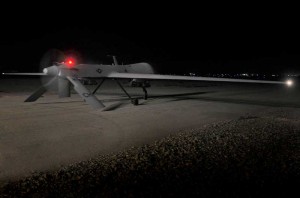
The key recommendations of the report for Denmark is as follows:
Preparing for a Decision
• Stand-up a dedicated UAV-unit in Danish Defence Command—perhaps dovetailing the “Future Fighter Aircraft” team, to consider the role of unmanned systems in Danish airpower.
• Maintain or increase participation (in terms of personnel) in NATO’s AGS system as it becomes operational to expand the Danish knowledge base.
• Follow UK and NATO attempts at certifying systems for wider use in civilian airspace to facilitate their peacetime and dual-use roles.
• Actively support efforts by national and international aviation authorities to establish solid regulations for the use of UAVs in civilian airspace.
• Engage potential partners for procurement and/or operations early and informally, but in detail.
• Piggyback to the widest possible extent on experiences and lessons of comparable partners and allies already operating UAVs.
• Considering modularity—more potential configurations—means more kinds of missions. This is currently how the manned Challenger system works. But modularity also incurs higher expenses and system risk.
• Continue tests and experiments—both in the Arctic and non-Arctic parts of the Kingdom—and involve potential partners in these to create the basis for discussing future joint requirements.
• Software and sensor-packages are crucial for the capability a system will be able to deliver. These are equally expensive and can account for a substantial part of the price of a system.
In Deciding
• Have a clear definition of tasks and consolidated concepts of operations ready.
• Ensure a clear command structure for procuring, certifying, manning, and operating the system.
• Engage other government agencies. UAVs can produce data for many potential users.
• Will Danish UAVs only be a military capability? With expected regulative changes, civilian governmental demand will rise, and with that also the potential for sharing expenses.
• Continue to seek partners and work for synchronicity in when and what to procure, even if it might mean compromising on system requirements or the defence planning process.
In Initial Operations
• Contemplate whether, for an initial start-up period, operations should be conducted from an experienced Allied user’s facilities to reduce risk and increase everyday access to knowledge and expertise (as the UK has done).
• Trained personnel, infrastructure, and organization must be in place and be robust at an early stage.
The report has a number of good insights: we are highlighting some of those insights below:
UAVs are costly:
By 2009, for instance, “more than a third of … Predator spy planes … [had] crashed.”30 Accident rates have been high for the entire US UAV fleet.
The Air Force in a 15-year period through Sept. 30 [2012] recorded 129 accidents involving its medium- and high-altitude drones: the MQ-1 Predator, MQ-9 Reaper and RQ-4 Global Hawk. The figures include accidents that resulted in at least $500,000 in damage or destroyed aircraft during missions around the globe.
When compared to manned aircraft in the USAF fleet, Northrop’s Global Hawk and General Atomics’s Predator and Reaper unmanned aerial vehicles have had a combined 9.31 accidents for every 100,000 hours of flying. That’s the highest rate of any category of aircraft and more than triple the fleet-wide average of 3.03, according to military data compiled by Bloomberg…..
As these systems mature, their mishap rates will likely decline, but it is unlikely they will ever reach the level of comparable manned aircraft.
Why did Denmark fail in its efforts to integrate the SAGEM UAV?
There are several reasons for this highly publicized failure.
First, the system was still at a developmental stage, and very few operational experiences existed. The manufacturer, Sagem, had not completed its own system integration at the time. This led to high failure rates in many parts of the system and a critical lack of spare parts, which the producer could not meet.
Both issues increased the risks associated with the system, which were compounded by how the system was integrated and operated. First, the project was organized with unclear lines of communication and responsibility, which made decision-making and oversight complicated.
Secondly, it proved very difficult to recruit, train, and maintain a sufficient number of qualified personnel to operate the system. Accordingly, the unit responsible for operating Tårnfalken was never fully manned and lacked qualified personnel.75
There are several reasons for this, one being that the Army was responsible for defining the structure and number of positions in the unit, whereas the Air Force was responsible for recruiting and hiring personnel. Thus, no single command was solely responsible for properly manning the unit.
Because of the unreliable system, the aircraft would often be grounded due to technical failures, which disrupted the training and certification of the unit. At other times, the aircraft would be airworthy, but there would be no qualified staff available to operate it—again making it difficult to certify the system for operational use. The lack of skilled personnel and high numbers of accidents created a vicious circle, multiplying the significance of both problems.
In sum, a very complex and accident-ridden aircraft without sufficient service agreements and reliable spare-parts deliveries combined with a shortage of qualified staff and a complex project organization with unclear responsibility rendered it difficult to reach operational status. Together with the financial costs, this led to the ultimate termination of the project.
In analyzing the project, Rigsrevionen (The Danish Government Auditors), concluded that the Danish defence forces did not fully appreciate the complexity of operating an advanced UAV system or the resources and personnel required to operate it.
Operational Realities are Specific
UAVs have only recently matured as a military capability—and then only for the first mover (the United States), a nation that has spent over six decades working on the problem of integrating various advanced technologies into working systems.
Still, they have not been designed with longevity in mind.
As noted in the history of UAV use by the United States, Great Britain, France, and Denmark, UAVs are far more prone to accidents, equipment failure, communications glitches, and hostile fire than most manned aircraft—even when controlling for the maturity of the platform in its development cycle.
Aeronautical engineering can be complicated, and removing the man from the cockpit also removes the ability to instantaneously assess and adjust to environmental conditions and malfunctions.
These craft operate best in ideal conditions: fair weather that is neither too hot nor too cold, nor too windy, and where there is no enemy fire attempting to destroy it.
It must be accepted that when conditions are not ideal, UAVs will currently be lost at a rate that is disproportionate to that of manned aircraft performing the same sorts of missions.
The Utility of UAVs for Denmark
For all of the current types of international military operations undertaken by Danish armed forces, the ISR capabilities provided by UAVs are an important asset provided either indigenously or by allies; and that the capability provided by additional UAV systems would present a significant additional operational asset for the Danish armed forces…..
In addition to its international tasks, the Danish armed forces conduct a number of national operations. The 2013–2017 Defence Agreement mentions surveillance, the enforcement of Danish sovereignty, and search-and-rescue operations as significant. In addition to these tasks, the Danish military conducts a number of civilian tasks in cooperation with other government agencies.109
Significantly, and with increasing importance, these national operations include the Arctic region in the Danish Realm. Whereas the tasks are largely the same, the conditions in the Arctic and non-Arctic regions in the Danish Realm differ radically. The potential requirements for UAVs to be used in Denmark or in the Arctic therefore differ.
The relatively small Danish territory means that sea, air, and land are relatively well-monitored via air and naval presence as well as satellite and radar coverage. In turn, this makes it possible for stand-by naval and air assets to counter potential violations of Danish territory or sovereignty. These functions could be strengthened by introducing a range of UAVs to enhance situational awareness over Danish territory and supplement existing capabilities. Important to bear in mind, however, is that the current unmanned systems primarily provide ISR. A UAV therefore cannot enforce Danish sovereignty in the same manner as a manned navy or air asset.
Another important task for the Danish Navy and Air Force is search and rescue. The increased situational awareness provided by UAVs can be employed to search for ships and/or persons in distress on water and land. As with anti-piracy operations, UAV use in combination with ships and helicopters would increase capacity. The persistence of UAVs would also enable search operations of a longer duration and a wider geographic area. Their presence could help reduce response times and get personnel to the right location faster when coordinated with manned rescue platforms.
Depending on the system and number of platforms, unmanned systems can maintain a continuous, 24/7 operational presence. Combined with their sophisticated surveillance capabilities, this also makes them well suited to support other government agencies with broader responsibilities for public safety, security, and environmental protection. In case of an emergency in Denmark, UAVs could significantly supplement existing monitoring capabilities. Moreover, they can be used to monitor suspected polluters, smugglers, and other forms of unlawful or unwanted activity.
Numerous systems could increase the capability of Danish national operations. In October 2013, for instance, the Italian Air Force deployed its Reapers to the Mediterranean to increase its search and rescue capabilities in response to the loss of life of migrants attempting to cross the Mediterranean Sea into Europe.110 A comparable system would increase Danish capabilities—but so too would a smaller, perhaps ship-launched, tactical system.
In the Arctic territories in the Danish realm, the Danish armed forces face very similar tasks but under very different circumstances. The Danish territory in the Arctic covers vast distances, which are imbued with very little physical infrastructure (civilian or military), very fragile, often not non-existing, communication facilities, and harsh environmental conditions.
Therefore, while there is a significant and widely acknowledged current and future demand for increased ISR capabilities in the Arctic, the region presents other and more significant challenges to the employment of unmanned systems than operations in the non-Arctic part of Danish territory.
First, a UAV system to be used in the Arctic would need to be able to overcome the challenges associated with the harsh climate, meaning a system able to cope with high winds and possessing a well-developed de-icing system. Many smaller systems are slow and built for a temperate climate, making them vulnerable to both wind and temperature.
This, secondly, makes it logical to consider a larger MALE or HALE system. One such system is the US Global Hawk, which the Canadian Forces have experimented with for Arctic operations.
Given its longer range, such a system would also make sense with respect to the vast territory. A larger system, on the other hand, requires substantial physical infrastructure and is expensive to procure and costly to maintain.
Thirdly, large long-range UAV systems are over-the-horizon systems, and operating them therefore requires satellite coverage with substantial bandwidth. Establishing such communications architecture, especially for real-time data transmission, requires substantial investments.
Real Costs and Personnel Demands
Should Denmark decide to acquire a MALE system like the Reaper or a strategic HALE UAV like the Global Hawk to patrol Arctic regions, it is important also to consider the issues of manpower, pricing, logistics, and organization.
UAVs may be “unmanned,” but they are manpower-intensive systems. For example, manning five Global Hawk airframes would require approximately 500 personnel.121 NATO’s organization for operating its AGS-system—also based on the Global Hawk—is approximately 600 people. Consequently, and based on a rough calculation, operating three HALE UAV units—the number of air frames Canada deemed necessary to be able to patrol Canadian territory 24/7—would require roughly 280 personnel.
While requiring fewer personnel to operate than a Global Hawk, a MALE tactical UAV such as the Reaper would also be manpower-intensive, especially if it is to provide continuous coverage.
Moreover, it is also necessary to consider the operational differences between the two systems. A Reaper would need to deploy (including ground-station crew and so forth) to Greenland in order to operate there, leaving it vulnerable to the local weather. A Global Hawk, on the other hand, could fly from Denmark (or other locations) and remain above hard weather. Furthermore, it covers substantially more ground, thus providing more coverage per airframe. Additionally, the systems are expensive both in acquisition and operating costs.
Determining the actual costs of such systems is inherently difficult. However, to name a couple of examples, France expects to pay $874,000,000 for 12 Reaper UAVs, the Dutch are in the process of acquiring four Reapers at a cost of “up to” €250,000,000, and a House of Commons report has referred to the cost of procuring and operating UK UAVs in Afghanistan from 2007 until December 2011 as amounting to £729,000,000…
It is important to note that approximately one-third of the staff needed is involved with processing the data produced by the system. These are highly trained personnel, and they must be recruited, educated, and trained before the system can be put to use….
It does not require a lot of personnel to fly and operate UAVs. It is the supporting personnel—and especially those needed for the processing, exploitation, and dissemination of data for intelligence—that increases requirements.
Exploitation of the data captured by the UAV is, after all, the primary purpose of acquiring them. Drawing again from the lessons associated with Tårnfalken, where the lack of highly specialized and well-trained personnel was deemed pivotal to the ultimate failure of the system,this underlines the pivotal significance of establishing a well-functioning, well-educated, and robust organization for operating the system.



